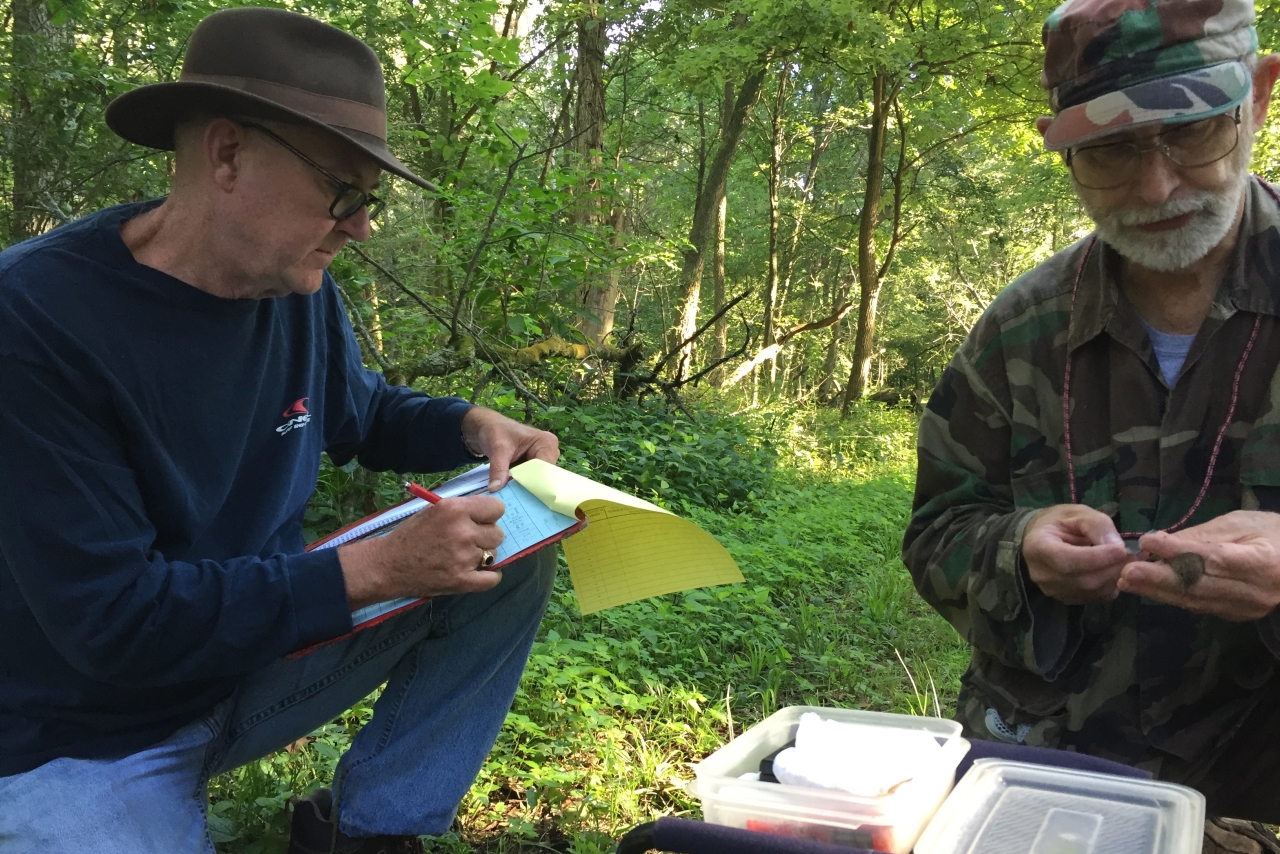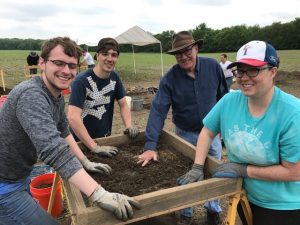One of the College of Arts and Sciences’ greatest points of pride is the engagement between our faculty and students. I frequently boast that in 2017, 40 percent of the articles published by Arts and Sciences faculty had student co-authors, with the figure rising as high as 65 percent in some departments.
It was my pleasure this summer to witness that engagement in person, by visiting the archaeological field school directed by Assistant Professor Logan Miller, Ph.D., in the Department of Sociology and Anthropology, and an avian research station directed by School of Biological Sciences faculty Charles Thompson, Ph.D., and Scott Sakaluk, Ph.D. Both projects provide students with hands-on experience in the research in their respective disciplines.
Miller’s field school is held at a site inhabited by indigenous peoples near Heyworth, around 600–800 years ago. Thirteen undergraduate and three graduate students worked for a month this summer unearthing the remains of a single dwelling, to try to reconstruct the lives of the people who lived there.
The work is exacting: Students peel the earth from the floor of the home, a fraction of an inch with each pass of a sharpened shovel, like creating chocolate shavings for a dessert. This earth is then placed in a mesh screen and sorted through by hand. Shards of pottery and pieces of stone tools provide clues to the inhabitants’ lives and where they came from. Based on the artifacts discovered at the site, this community appears to have comprised immigrants both from near Lake Michigan and from Cahokia, a community near St. Louis that appears to have been home to as many as 15,000 people (one of the largest cities in the world at that time).
The coming together of two cultures may occur for a number of reasons, and may lead to conflict or to the emergence of a new civilization. As groups share knowledge and provide different perspectives, new social structures and what we now call intellectual property may emerge. This process continues today, and it is important that we understand it.
The Merwin Preserve of the Parklands Foundation, several miles north of Bloomington-Normal, is home to 820 house wren nest boxes. In the past 30 years, Thompson and Sakaluk, along with scores of students (known as the Wren Crew), have been studying, among other questions, the relationship between maternal hormones and the environment, and how these factors influence characteristics of the wren offspring.
Birds provide an especially good model for studying this relationship. Maternal hormones are passed to the offspring, as they are in all species. In mammals, however, hormonal effects can continue throughout gestation, but in birds the fertilized egg is laid, and is not further affected by maternal biology. In this way, the researchers are able to separate the initial effects of hormones from those that might arise as the mother continues to interact with the environment and her offspring after they hatch.
Our faculty members and their students visit the Preserve six days each week during the breeding season, roughly mid-May to early August. On most days, one of the faculty members, one or more graduate students, and two or three undergraduates each visit a predetermined set of nest boxes with specific tasks related to one of the three or four experiments being conducted at any one time. Some may be recording and counting clutches of eggs, and some may be trapping, measuring, and banding adult birds. The dedication of the students involved is evidenced by their giving up their summer Saturdays, beginning at 5 a.m., to conduct the research. Their commitment is rewarded by their names on presentations and publications, and in the advantage they have when they enter graduate school or their chosen profession.
These are but two examples of the commitment that the faculty in the College of Arts and Sciences show every day to our students. The engagement can be seen in every department, and has been noted to me by visitors to campus on numerous occasions. Illinois State University lives its motto, “Gladly we learn and teach,” as well as any, and far better than most.


